Math 124 Final Examination Winter 2022
Hello, dear friend, you can consult us at any time if you have any questions, add WeChat: daixieit
Math 124
Final Examination
Winter 2022
1. (12 total points) Answer the following.
(a) (4 points) Evaluate

using two different methods, neither of which is guessing the answer from a table of values.
Using first method:
Using second method:
(b) (4 points) Evaluate 
(c) (4 points) Evaluate 
2. (13 total points) Find dy/dx. You do not need to simplify.
(a) (4 points) 
(b) (4 points) y = ln (sin(2x))
(c) (5 points) y = tan(xx) + arctan(x2)
3. (10 points) The function f(x) is continuous on its domain of all real numbers. The graph of its derivative is shown below. As you can see the derivative exists everywhere except at x = 6. Answer the questions based on the graph below. Give your best approximation if you are not sure about the exact numbers.
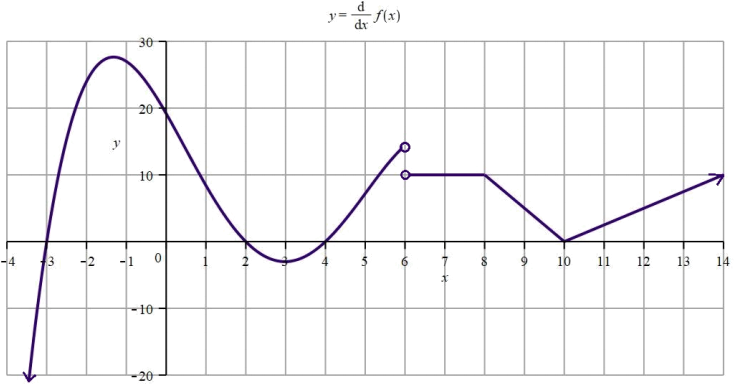
(a) List the intervals where the graph of y = f(x) is increasing.
(b) List the x-values where the graph of y = f(x) has a local minimum.
(c) List the intervals where the graph of y = f(x) is concave down.
(d) List the x-values where the graph of y = f(x) has an inflection point.
(e) If f(6) = 3, what is the value of f(7.5)?
4. (12 points) A metal rod is bolted on the x and the y-axes at the points (6, 0) and (0, 6). A second rod is hinged at the origin and is free to rotate about the origin as shown. It intersects the first fixed rod at the point R(x, y), which varies as the angle θ changes.
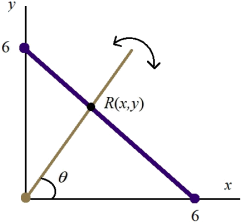
(a) Find an equation relating the angle θ shown with the x-coordinate of the point R. Hint: Relate x, y, and θ first and then try to eliminate the y from the equation.
(b) Use your equation to find the value of x when θ = π/4.
(c) Use linear approximation to approximate how much x decreases if we increase θ from π/4 to 17π/64 radians.
5. (12 points) The point (2, 0) is on the curve defined by the parametric equations

(a) Compute dy/dx and determine if y increasing when x is increasing at (2, 0)?
(b) Using the second derivative, determine if the curve is concave up or concave down at (2, 0).
(c) Which of the options A, B, C, or D best describes the curve locally at (2, 0)? Justify your answer.
6. (12 points) Two carts, Cart A and Cart B, are connected by a rope 39 feet long that passes over a pulley P. The point Q is on the floor 12 feet directly beneath P and between the carts. Cart A is being pulled away from Q at a speed of 4 feet per second. At what rate is the distance between Cart B and the point Q changing at the instance when Cart A is 3.5 feet from the point Q?
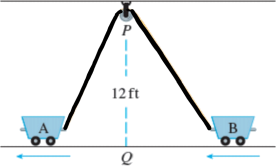
7. (11 points) A window has the shape of a half disk of radius r placed on a rectangle as shown on the right. The perimeter of the window is to be 5 meters. What are the dimensions of the window which will maximize its area?
Make sure you verify that you have indeed a maximum area.
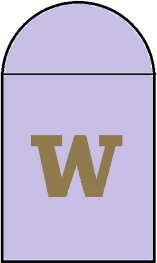
8. (18 total points) Consider the function f(x) = (1 − x)ex.
(a) What are the x- and y-intercepts of the graph of f?
(b) Determine the horizontal asymptotes of f.
(c) Find all critical numbers of f(x) and determine the intervals in which f is increasing and in which it is decreasing.
(d) Determine the local minima and local maxima of f.
Recall that the function is f(x) = (1 − x)ex .
(e) Using f ′′(x), find the intervals where f is concave up and where it is concave down.
(f) Using all of the above information, sketch the graph of f in the provided coordinate system.
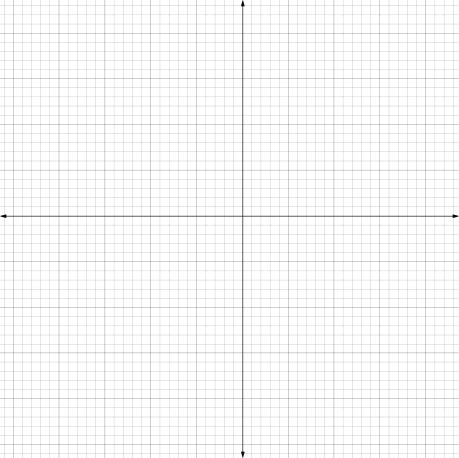
2023-12-13